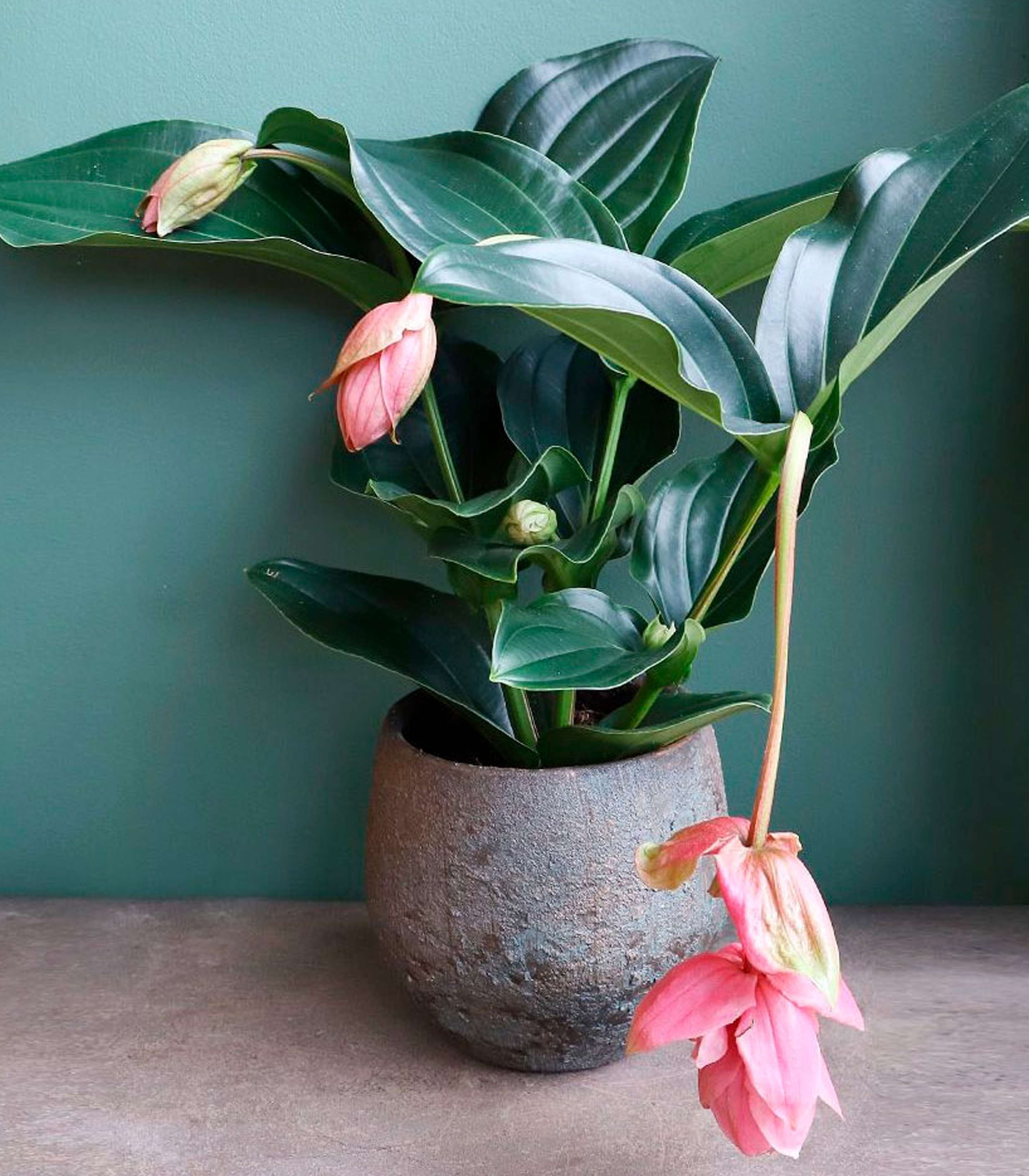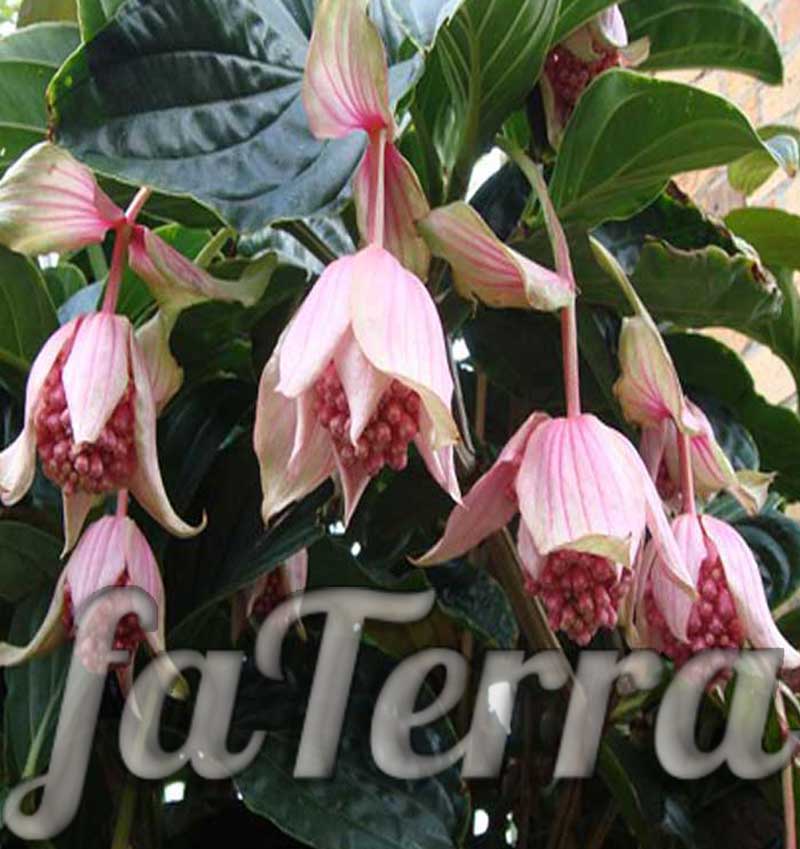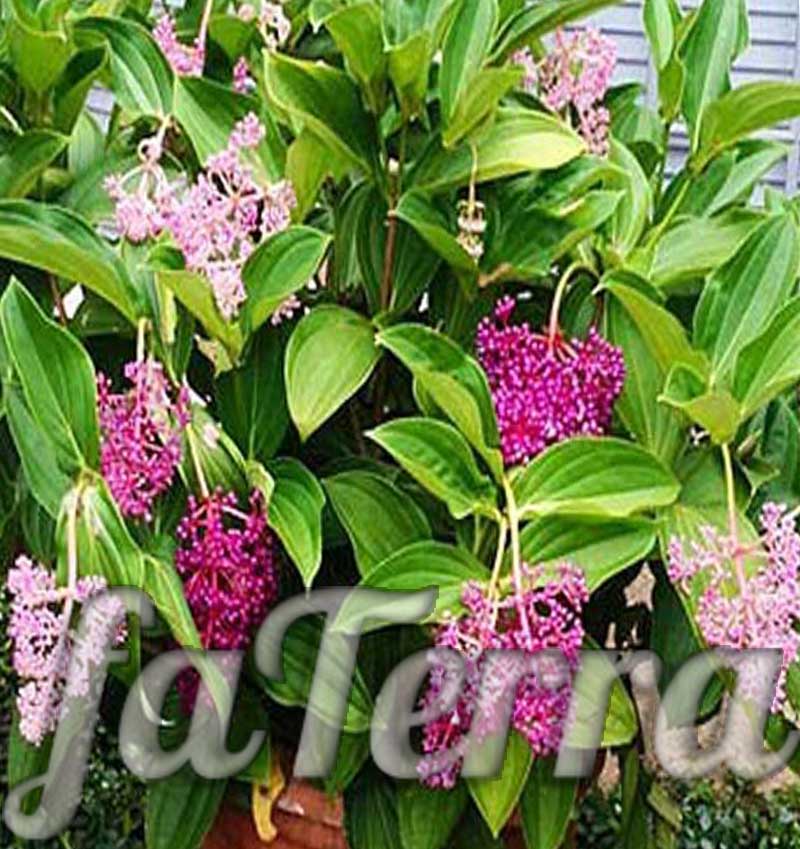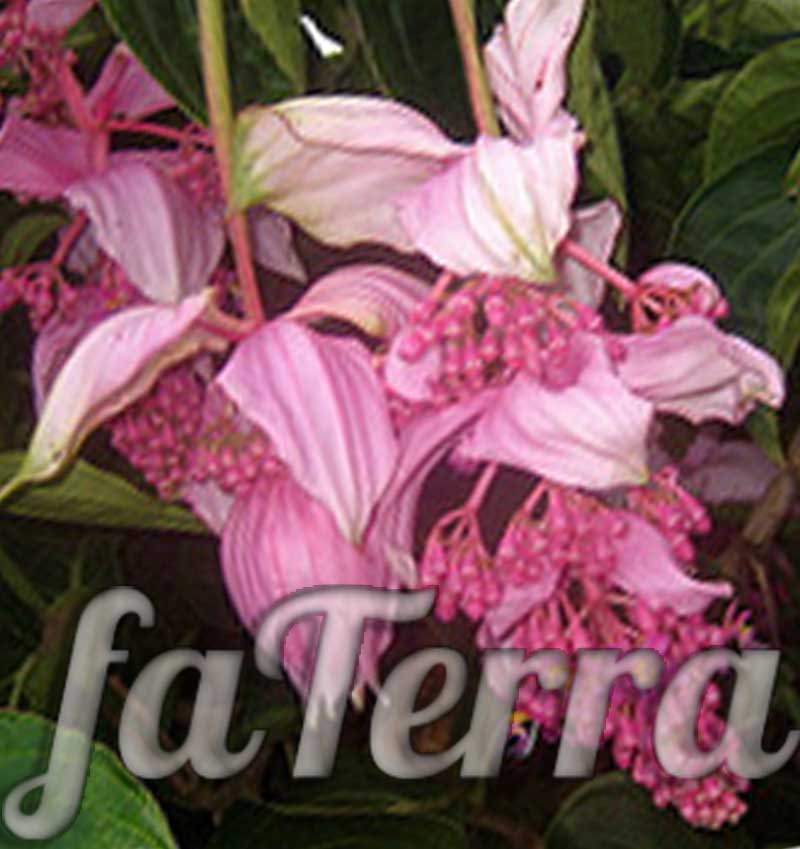Latin name: Medina
Category: perennial shrubs and vines
Origin: Asia, African tropics, Madagascar
Medinilla - the miracle of the Philippine Islands
Medinilla (Medinilla) is an evergreen, branched, fairly large, delightful upright shrub with large shiny leaves. A particularly fabulous sight that can be seen without taking your eyes off during the flowering of the medinilla. On a long gracefully curved peduncle, you can see a huge luxurious inflorescence gracefully hanging in the form of a panicle with numerous small pink flowers.
The whole beautiful, wonderful, luxurious, amazing spectacular view of the medinilla indicates that we have a representative of distant hot countries. The tropical forests of the Philippines, namely the island of Luzon, are considered the birthplace of the medinilla. The name was given to the plant thanks to José de Medinilla y Penida, who served as governor of the Marianas in the early years of the nineteenth century. This unusually beautiful plant arrived in European countries in the second half of the nineteenth century.
The medenilla plant is an exquisite specimen of the genus of evergreen perennials of the melastoma family. In the natural natural environment of tropical Africa, Asia and the Pacific Islands, there are about four hundred species of the genus Medinilla. They are presented with huge shrubs and lianas, reaching a height of up to three meters.
These plants are highly ornamental.
Only a few types of medinilla of amazing magical beauty often adorn collections in botanical gardens, greenhouses, and only one species is grown in the cultural conditions of industrial gardening. This spectacular plant can always become the pearl of a perse collection at home.
Types of medinilla
Veined Medinilla (Melinilla venosa)
Malaysia is considered to be the native place of growth of the semi-epiphytic shrub. A variety of this medinilla has rather thin, rounded, densely pubescent shoots. On short petioles are greenish veiny elongated leaves, having the shape of an ellipse (about 20 cm long, about 8 cm wide) pointed towards the top. A few yellowish flowers are collected in original umbrella-shaped inflorescences.
Medinilla Cuming (Medinilla cumingii Naudin)
The habitual natural conditions of this epiphytic shrub are the tropical rainforests of the Philippine Islands. Large, slightly concave, oblong elliptical leaves, or obovate in shape, on which clear pronounced veins can be seen, the size of the leaves is up to 30 cm long, -12-20 cm wide. Large, up to 5 cm, numerous pink flowers are formed into erect brushes . Medinilla Cuminga flower has a flowering period from March to June.
Medinilla beautiful (Medinnilla magnifica)
Medinilla is magnificent, she considers the island of Java to be her homeland, where it grows in tropical rainforests at an altitude of about 500 m above sea level.
This type of plant is highly decorative, is a large shrub about two meters high. The branches are thick, having the shape of a tetrahedron. Dark green leaves are leathery, large, about 30 cm long, arranged oppositely, oval in shape. The upper part of the leaf is smooth dark, the veins on it are lighter, the edges are wavy, and the underside is lighter. Numerous pink flowers form a hanging inflorescence in the form of a brush up to 50 cm in length, which has large bracts with bright pink veins.
Medenilla beautiful is a beautifully flowering, ornamental, deciduous pot plant. Medinilla magnifica feels great in rooms, greenhouses and, of course, in botanical gardens.
Medinilla home care
It is advisable to buy medina in the spring. The regal plant inpidual who settled in your house is very picky about growing conditions. Medinilla does not tolerate drafts, it is desirable to protect it from temperature extremes. In summer it is necessary to shade from the bright sun, and in winter it is necessary to provide good lighting. It is better to water your sissy with warm water, abundantly during the flowering period in spring and summer, water moderately after flowering, and during the rest period, more rare watering is needed. It is also necessary to maintain high humidity through frequent spraying.
Regular spring pruning will help to bring a beautiful shape to the bush.
Medinilla reproduction
You can propagate medenilla:
- Cuttings. At the same time, each prepared specimen of 2-3 knots must be kept in a growth stimulator and buried in a wet mixture of sand and peat. Place in a warm dark place. Roots will appear within a month.
- Layering. Less hassle way. On a branch, you need to make an incision with a clean knife, wrap it with wet moss, after soaking it with a stimulant for the formation of roots, wrap it with a film. After the formation of roots, separate the process and plant in light fertile soil.
- Seeds. In early spring, sow the seeds in flat pots with a mixture of sand and leafy soil, place in a warm place. Medinilla from seeds pleases with its shoots by summer, then the seedlings are transplanted and care is performed as for an adult plant.
Pests and diseases of medinilla
Medinilla care allows you to keep the plant in good condition, which increases resistance to diseases and a better rebuff to attacking pests. The primary danger to the plant is mealybugs. They appear on the leaves during a hot period or from stagnant water. Sometimes there is a defeat by a scab and a red spider mite. Medinilla disease can spread quickly, so you need to start pest control immediately.
At the first signs of the disease, wash the affected areas with soapy water, and then, if necessary, treat the plant with chemicals.
Problems that may arise when growing
- Drying out or waterlogging of the soil: medinillos need to be watered regularly, but you should not overdo it with water. Too wet soil can lead to root rot, while too dry soil can lead to stunted plant growth and dry leaves.
- Lack of Light: Medinilla needs bright but not direct sunlight. If it is placed in a place that is too dark, the plant may stop growing and produce fewer flowers.
- Wrong temperature: Medinilla requires a stable temperature in the range of 18-24 degrees Celsius. It does not withstand frost or heat.
- Insufficient Nutrients: Medinilla needs regular feeding. If the soil does not contain enough nutrients, then this can lead to a halt in the growth and development of the plant.
- Parasites and diseases: Medinilla can fall prey to various parasites and diseases, such as mealybug, spider mite, anthracnose and others. If you do not pay attention to this, the plant may die.
- Incorrect pruning: Medinilla needs to be pruned correctly to maintain its shape and encourage flowering. Incorrect pruning can lead to the exhaustion of the plant and the cessation of flowering.
- Inefficient Drainage System: Medinilla needs a good drainage system to avoid flooding the roots. If the drainage system is not effective, then this can lead to root rot and death of the plant.
- Wrong pot selection: The medini needs a spacious pot with good drainage. If the pot is not suitable for the plant, then this can lead to drying out or waterlogging of the soil, as well as stopping the growth and development of the plant.
- Incorrect Plant Placement: The Medinilla should be placed in a space large enough for the plant to develop freely. Also, do not put the plant next to air conditioning or heating, as this can lead to temperature changes and unfavorable conditions for growth.
- Need for regular maintenance: Medinilla requires regular maintenance, such as pruning and removing wilted flowers and leaves. If you do not pay attention to this, then the plant may stop blooming and begin to fade.



















Write comments
Comments